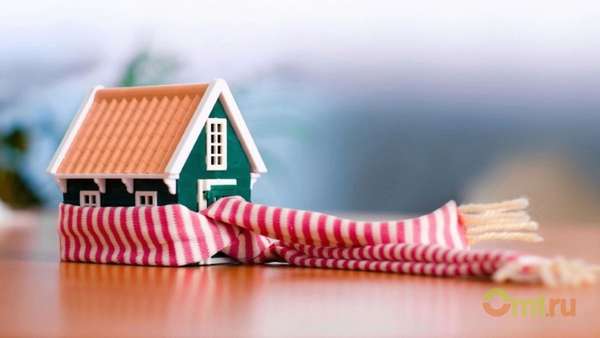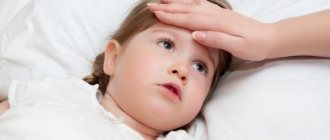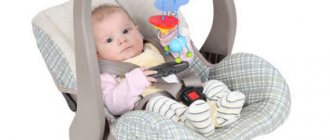A person’s well-being and mood largely depend on the air temperature in the house. This is where he spends most of his free time. Therefore, it is important for everyone that the “weather” in the house is comfortable and conducive to normal rest and sleep. To do this, you need to know the norms of temperature conditions, control them and, if possible, save heat and your finances.
Temperature standards
Sanitary rules and regulations (SanPiN) 2.1.2.2645-10 are approved by Decree of the Russian Federation of June 10, 2010 N 64 and regulate the optimal temperature in the apartment.
In Appendix No. 2 of this document, a comfortable indoor temperature for a person depends on the climatic season and the purpose of the living space. The fact that he is there without outer clothing and for quite a long time is taken into account - at least two hours continuously.
During the cold season, the range of permissible temperatures in apartments ranges from +18 °C to +25 °C. In summer, the values fluctuate from +22 °C to +28 °C.

According to GOST
Developed at the state level, GOST R 51617-2000 “Housing and communal services. General technical conditions”, sets the temperature range for different residential areas.
The concept of “room temperature” is a definition of how many degrees are provided to maintain a comfortable temperature regime during the heating period in individual living spaces:
- living rooms: + 20 °C - 23 °C,
- children's rooms: +23 °С - 24 °С,
- kitchen and toilet rooms: +18 °С - 21 °С,
- bathroom: +23 °C - 25 °C,
- corridor, pantry, staircase: +14 °C - 19 °C.
Scientific background
It is scientifically proven that a person’s quality sleep depends on a good climate in the bedroom. Too hot and dry air, according to doctors, interferes with free breathing, causes insomnia and heart rhythm disturbances. Therefore, an acceptable temperature for sleeping should not be higher than +18 °C.
Optimal temperature in the apartment: influencing factors
Above, we told you what temperature is considered normal in an apartment, now it remains to find out what affects its changes, that is, increase and decrease. If you know all the reasons for this change, you can adjust the temperature according to your preferences.
Basically, the thermometer readings in the apartment will depend on:
- Battery volume;
- Amount of heat loss;
- Velocity of the coolant in the system;
- From the heating system wiring.
No matter how comfortable the temperature in the apartment is, in any situation there will be someone who complains about excessive heat or the ability to adjust the heating of the room.
If utility companies fulfill all the conditions according to the regulations, but the housing still does not warm up, you need to pay attention to heat loss.
Care must be taken to ensure that all heat losses are eliminated, especially in winter. Most likely, you have noticed that many people are currently insulating their apartments with foam plastic from the outside; this action helps to significantly reduce heat loss. But the first step towards this will be replacing old windows with more modern ones.
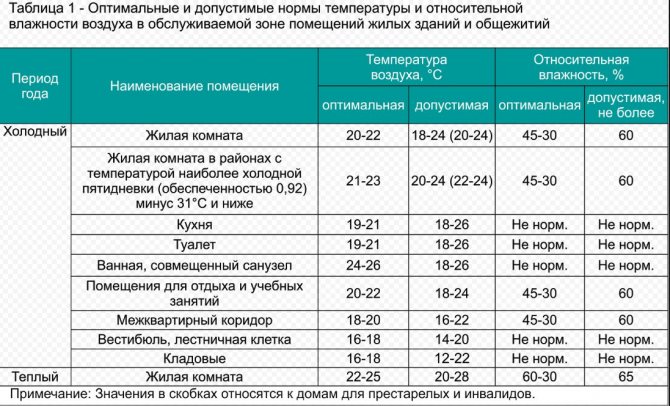
Much depends on the type of radiators and their capacity. Of course, the larger the battery, the warmer the room will be, but you cannot increase the number of sections yourself, since the stable operation of the entire system will depend on this. Increasing the number of radiators can lead to a decrease in pressure and speed of the coolant.
This will entail:
- Partial warming up of batteries;
- Lack of heat in batteries;
- Inability to achieve the optimal temperature.
- Heat losses due to the fact that the coolant will travel a greater distance to its destination.
In such a situation, one can only dream of achieving the optimal temperature.
What factors influence
The microclimate in the house is influenced by both external and internal factors. External factors include the location of the premises, the change of season, the technical parameters of the structure, humidity and atmospheric air pressure.
Subjective factors largely depend on the residents themselves. People are able to independently maintain comfort in their home by performing a number of specific actions in a timely manner.
So, to save heat, it is enough:
- Replace old frames with energy-saving double-glazed windows or carefully seal cracks in old structures.
- If necessary, insulate the walls of corner rooms.
- Lay a warm floor covering or install heated floors.
- Add a heat reflective screen to the wall next to the radiator.
- Do not cover radiators with furniture or thick curtains.
- If possible, insulate the loggia and front door.

Climate
The start dates of the heating season over the vast area of Russia differ greatly depending on latitude. To draw up heat supply schedules, average winter time values are taken from a special temperature table. For the southern territories they are one, and for the northern territories they are different.
For example, in the Nenets Autonomous Okrug the heating season begins in September, and in the Moscow region - only in early October. In the Krasnoyarsk Territory and Chukotka, residents will begin heating their apartments at the end of August. For residents of the Black Sea coast, heat is supplied for only three months, starting in December.
There are places in the Russian expanses where it is necessary to warm up houses throughout the year, for example, on the polar island of Dikson.
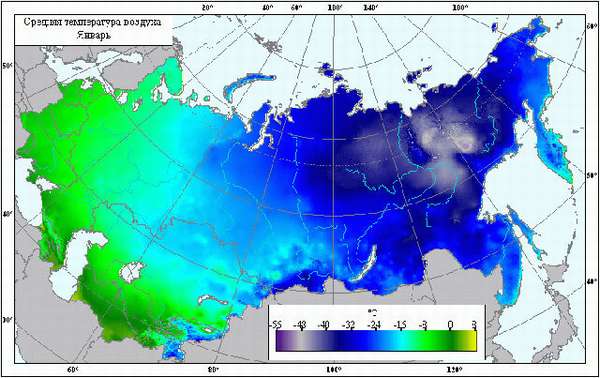
Season
The change of season also affects the microclimate of the home. With the onset of dank and rainy autumn weather, the walls of houses heated over the summer gradually cool down. In the spring, when the heating is turned off, room thermometer readings also decrease.
Building Features
The technical characteristics of the building, its thermal insulation, materials - all this affects the microclimate of the home. For example, each additional corner in the house is a separate cold area that requires additional heating.
A brick building is warmer than a panel building with seams, and wooden houses not only keep heat well in winter, but also provide pleasant coolness in the summer.
Human factor
The human factor plays an important role when choosing a comfortable thermal regime. For example, some people prefer a warmer atmosphere, while others prefer cooler air.
Many people open their windows to bring in fresh air even in the winter months, and use air conditioning in the summer heat. This lowers the degrees by several units.
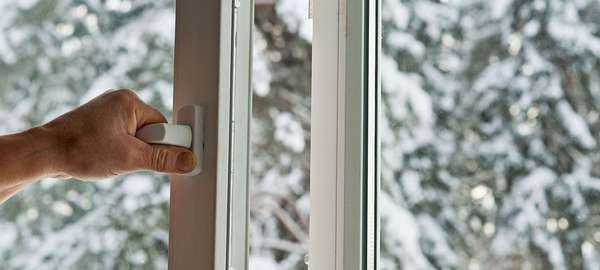
Determining what temperature should be in the apartment (video)
So, thanks to the article, we found out what temperature is permissible and maximum depending on the time of year. Now you know that each room must have its own separate temperature regime and this corresponds to laws and regulations that should be addressed in case of violation of the heating regime, but in most cases, people still prefer to solve problems on their own.
Comments
0 Valentina 02/03/2018 11:28 I live in an ordinary apartment building.
Our temperatures are normal in winter and summer – we’re not complaining. Yes, in spring and autumn too. Not normal only in May and September, when the heating is turned off or has not yet been turned on. Then we freeze. Quote
Update list of comments RSS feed of comments for this entry
Based on seasons
Heat supply to apartment buildings begins and ends according to established schedules, depending on the seasons and regulatory requirements.
in winter
In the cold season, the number of degrees according to readings is always less than in summer. For residents of central Russia, the normal temperature in an apartment in winter should not be below +20 °C (+22 °C for corner apartments).
Heating is turned on when a steady cold snap occurs (with a temperature below +8 ° C) for five days.
During the heat
With the onset of summer time, the comfortable temperature in the apartment can vary from +22 °C to 28 °C in rooms of different uses.
Overheating should not be allowed, as this not only affects a person’s well-being, but also causes the appearance of microorganisms in the room.
For newborns
When a baby arrives in the house, the regulatory requirements for temperatures change slightly. Pediatricians advise adhering to the optimal regime in the nursery within the range of +18 °C to +20 °C. At these values the child is comfortable. Too hot and dry air, on the contrary, interferes with the baby’s breathing and leads to the appearance of dry crusts in the nose.
The delicate skin of a baby sweats in a hot room, which is why it becomes covered with diaper rash, since it is not able to quickly remove excess moisture. The crib should also be located away from direct exposure to cold air flow - a window or air conditioner.
For the baby’s comfort you need:
- in hot weather or with strong heating, open windows more often to ventilate the child’s room,
- in the warm season, give the baby fluids and baths more often,
- cover too hot radiators with thick fabrics to retain heat.
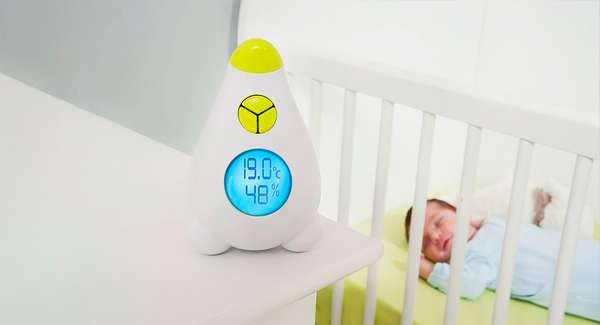
How to make a room temperature comfortable for a person
How many degrees should there be in the house? In accordance with GOST, the lower limit can reach 15 degrees, taking into account the night time error. Although not everyone will like being in such conditions. It should be said right away that complaining in this situation will be in vain, since all the necessary standards have been met. Therefore, people make decisions about purchasing heaters, insulating apartments and independently adjusting the temperature.
What should you do if in winter the temperature at the norm of 24 is 28 degrees? Sometimes it happens.
If your batteries have a thermal head, then there will be no problems with adjustment, you just need to set the required indicator.
But if there is no thermal head? A person will not open a window in winter; it is not comfortable and, moreover, can cause illness. This option is especially not suitable if there are small children in the house.
There are several options to get out of the situation:
- Lightly tighten the tap on the battery;
- Buy an air recuperator.

The first option is not recommended, but if there is an excessive need, then it must be done. Here you should take into account the fact that in this mode the locking system will last much less than it should.
How not to harm your health
It would seem that the difference in the standards for the number of degrees in rooms is not so great, but a constant lack of heat or its excess can lead to negative effects on the human body.
Risks of overheating and hypothermia
Too hot and dry air inside a living area can cause the appearance of various types of bacteria that cause many infectious diseases.
In addition, in a stuffy environment, a person sweats and loses a lot of moisture, which negatively affects the functioning of the cardiovascular and nervous systems. At the same time, the skin becomes dry and lifeless, and the body’s fatigue increases.
Prolonged exposure to a cold room causes a disease called hypothermia. At the same time, limbs freeze, blood vessels narrow, and problems arise with the respiratory system and nervous system.
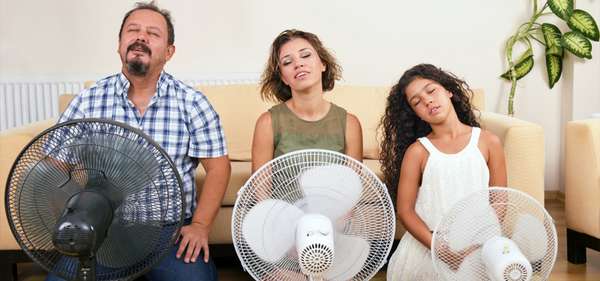
Taking measurements
Temperature measurements should be taken in each area of residence if the apartment is too cold. For example, the batteries do not heat up due to an air lock formed in the system.
The measurement should be made within 24 hours. It is necessary to take readings every hour using a regular thermometer.
According to the rules, the thermometer is placed at a distance of a meter from the outer wall and 1.5 m from the floor level. It should be taken into account that sunlight penetrating into the rooms heats the room and increases the readings of the device. It is necessary to measure degrees in the cold season when the street air readings are from minus 5 ˚С and below.
If problems are detected in the heating systems, you should call specialists from the housing company to sign the appropriate report. The documents are drawn up in triplicate and submitted for recalculation of payments to the housing department (housing management department) or management company.
For recalculation, it is important to have the following documents on hand:
- one copy of the inspection report drawn up by specialists,
- an inspection report drawn up after troubleshooting, which indicates the full number of days in violation of standard indicators.
Measuring the temperature of a sleeping child
If a mother suddenly begins to suspect that her baby has a cold or other illness, the first thing she does is measure his temperature. First, simply place your palm on the child’s forehead or chest, and then take the thermometer. And if the child is sleeping, what should you do? Is it possible to measure the temperature of a sleeping child and what is the best way to do this?
But not everyone knows how to measure a baby’s temperature correctly, especially if they are young parents. What can the thermometer readings tell mom? We will talk about this and much more regarding the temperature of a newborn below.
Thermoregulation and body temperature of the baby
Human body temperature is one of the main indicators of the healthy or unhealthy state of the body. It shows how well thermoregulation functions in the body. Thermoregulation is the amount of heat the body produces and how much heat it releases to the outside.
The normal habitual mechanism of thermoregulation in a child does not begin to function immediately after birth. For about three months, the baby’s body learns to maintain a constant temperature, so the baby reacts quite sensitively to all changes in its environment. In this regard, it is very easy to overcool or overheat a little person.
Unstable thermoregulation in the first week after birth also explains the fairly frequent causeless rise in temperature. In most cases, this is not a warning sign. It’s just that the baby adapts to life outside the mother’s tummy.
Where to measure a child’s temperature correctly: TOP-5 ways
Pediatricians recommend the following areas of the body to determine children's temperature:
- axillary area;
- oral cavity;
- ear canals;
- rectum;
- groin area or elbow crease.
The readings of instruments for determining temperature in these zones may vary by 0.5-1.0 degrees. The highest will be in the rectum, the lowest - in the ear or under the armpit.
How to correctly determine the temperature of a sleeping child
The temperature of an infant can change due to any strenuous or active activity, for example, after a massage or bowel movement, the child’s body temperature increases slightly. In this regard, it is best to measure it in a state of complete rest of the baby, first of all when he is sleeping.
To begin with, you just need to touch your lips or palm (wrist) to the baby’s forehead. In this way, you can understand whether it is necessary to take out a thermometer in order to more accurately determine the baby’s temperature.
If the mother is sure that her baby’s forehead is hot, then using any device for determining degrees, you need to measure the temperature more accurately. Which areas of the body most accurately indicate the state of the body’s thermoregulation:
- Determination of temperature under the arm. This is the most traditional and familiar method of determination, but also requires accuracy and care. If a mother uses a regular mercury thermometer, she must be vigilant to ensure that the tip of the thermometer is in close contact with the baby’s body and arm, and does not extend beyond the armpit. The approximate time for determining body temperature is about 5 minutes. Since it is very difficult for a small child to measure the temperature when he is awake, pediatricians recommend performing this procedure on a sleeping baby. First, you should check to see if there is any sweat under the baby's armpit. If there is sweat there, you need to gently blot it. You need to carefully knock down a mercury glass thermometer and warm it up a little in your hand before using it. Slowly pick up the sleeping child in your arms or lay him on his side. When a child is sleeping, the thermometer can be placed between the handle and the body to be sure that the tip of the device is completely in the cavity under the armpit. For a newborn under six months of age, the normal temperature is from 36.2 to 37.3 degrees.
- Oral definition. It is recommended to determine the temperature of children orally only after 4-5 years. For newborn babies, you can only use special thermometers in the form of a pacifier. This device can also measure temperature if the child is sleeping. But you should remember that this procedure can be done 20 minutes from that moment, if the baby drank something warm enough before going to bed. Temperature measurement time is about 3 minutes. The optimal temperature is considered to be from 37.0 to 37.6 degrees.
- Rectal method. Pediatricians call this method the most accurate, but also the most painful for the baby. It is unlikely that you will be able to determine the temperature of a sleeping child this way, but if the baby is fast asleep, you can try. The baby should be placed on its side or back, with its legs tucked toward its tummy. You can place the baby on his tummy on his mother's lap. If you use a regular thermometer, its tip should be lubricated with baby cream. Having spread the child’s buttocks, the device is carefully inserted into the anus by 1-2 cm. Next, you should squeeze the halves of the baby’s butt. The procedure time is 1-2 minutes. Numbers in the region of 37.6-38.0 degrees are considered healthy in the rectum. It is convenient to use a digital thermometer or a button device for this type of temperature determination. You should not try to carry out this procedure if the baby is compressed and twisted, since the walls of the rectum are very thin and this method can be painful for him.
- A method for determining temperature in the ear canal. Performed using special devices. Quite acceptable for a sleeping child. These devices are equipped with special protective caps. With their help, you should carefully insert the probe of the device into the baby's ear canal. Requires 3 to 5 seconds; readings from 37.5 to 38 degrees are considered healthy.
- In the groin area or elbow bend. Pediatric doctors call this method not the most convenient and accurate, however, situations with newborn children are different, so you should remember about this method. The tip of the device fits into the crease of the groin or elbow. In this way, you can measure the child’s temperature when he is sleeping or at complete rest. Determination time is up to 5 minutes, healthy temperature is from 36.5 to 37.3 degrees.
All of the above places for measurement are convenient because under the skin in these places there is a large branching of blood vessels, which most accurately indicate the internal body temperature.
Models of modern instruments for temperature measurements
Today, many convenient thermometers and other devices for determining body temperature in young children have been developed and presented.
Among them:
- classic mercury thermometers made of glass;
- various models of digital (electronic) thermometers;
- infrared models;
- indicators with temperature sensitivity.
About which thermometer to choose, listen to the opinion of the famous pediatrician Evgeniy Komarovsky:
At high temperatures, the baby can sleep all day, and the mother will only have to measure the temperature of the sleeping child.
Any of the presented types of devices can be suitable for measuring the temperature of a sleeping child. But, no matter how convenient and modern the devices are, pediatricians consider mercury thermometers to be the most accurate. With certain disadvantages (possible danger, relatively long measurement time), such a thermometer will almost never fail or fail.
The main conditions for using a mercury thermometer:
- You cannot measure the temperature in the baby’s mouth and butt;
- use only in the armpit;
- store in a special tight case;
- After use, knock down the result and wipe dry.
How to correctly assess your baby's temperature
Since the child’s thermoregulation is still stabilizing, it is necessary to find out the norm of his daily temperature. This is easy to do - for several days, about a couple of times a day, you need to record the temperature of a healthy child. The average may indicate normal body temperature. It is advisable to do this when the child is sleeping. Because at this time the child is calm, and frequent measurements of a awake baby make him nervous, cause crying and negative reactions.
Has your child started getting sick often?
We go to kindergarten for a week, and sit at home for two weeks, getting treatment? Most likely, it’s not a matter of seasonal viruses and common colds, but a decrease in immunity. And perhaps it would be more correct to treat not only the effect, but also the cause?
We recommend reading the story of Ksenia Novikova, how she struggled with the frequent colds of her 4-year-old son.. Read the article >>
rebenokrazvit.ru
Where to complain
Lack of heat in residential premises is not always the fault of the management company. But first of all, if consumer rights are violated, this is where you should go.
If a response to the complaint is not received within 30 days, then the next authority will be to contact Rospotrebnadzor. It is this organization that controls the housing and communal services sector in various issues related to violations of consumer rights, including those related to heating.
